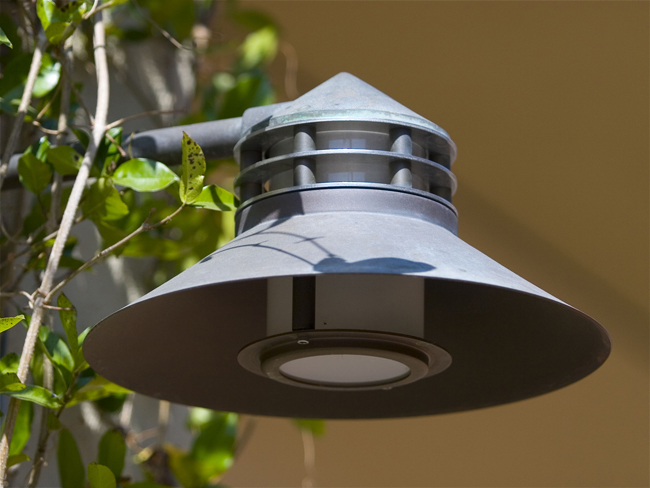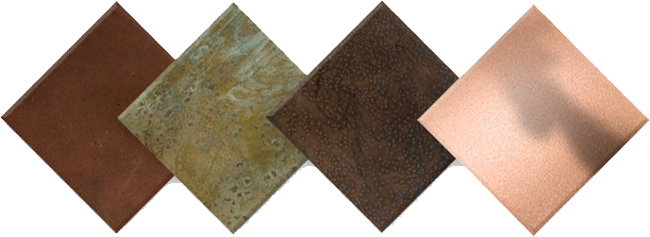Every month, TEKA Illumination's Customer Service Team will answer your Frequently Asked Questions:
QUESTION: How does a patina form on a TEKA fixture; how does the patina protect the fixture and for how long?
ANSWER: Though it might seem antithetical, natural and stable patinas offer the best protection from corrosion. Most are created by sulfur dioxide and hydrogen sulfide when combined with moisture (containing its own unique cocktail of minerals) and temperature changes creating copper sulfates.

Copper ions migrate from the pure source copper through the very first layers of oxidation (think penny-brown) where they react with sulfate ions to form an upper layer of crystalline brochantite [CuSO4·3Cu(OH)2] and antlerite [Cu3(SO4)(OH)4]. These chemicals provide the deep greens and blue hues. Trace organics like formate, acetate, oxalate and carbonate compounds help to the cement the transfer of ions together within the crystalline structure providing stability.
A stable patina protects it’s source metal much like a firefighter protects a home with a “burn-out,” halting transgressing fire. As long as copper ions are available the fixture’s self-replicating exoskeleton grows denser. The slower, thicker and more stable the patina the better the armor.

Halogen and metal halide lamps may last thousands of operating hours whereas solid state products with BKSSL™ technology will produce near-perfect white light for tens of thousands of hours but what about the actual fixture? BKU alumni know this is a loaded question. LM-80 is often cited as a pseudo-answer and it is one even less suitable for TEKA products.
According to corrosion scientist Robert Baboian of Texas Instruments, Inc. and his analysis of the Statue of Liberty renovations in 1986, a stable marine patina slows corrosion on copper to about 5% every 100 years.
On average a TEKA fixture such as a Beacon Stem Mount weighs somewhere between 20 – 25 pounds once assembled. In a natural environment it would loose 4.5 grams every year to patina. If this process was never-ending, the fixture would be consumed in approximately 2,000 years.
See all of our natural finishes and additional finish options here.




